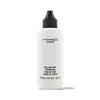What's inside
What's inside
 Key Ingredients
Key Ingredients

 Benefits
Benefits

 Concerns
Concerns

 Ingredients Side-by-side
Ingredients Side-by-side

Water
Skin ConditioningCyclopentasiloxane
EmollientTrimethylsiloxysilicate
EmollientButylene Glycol
HumectantPEG/PPG-18/18 Dimethicone
EmulsifyingDimethicone
EmollientPentylene Glycol
Skin ConditioningMagnesium Sulfate
Polyglyceryl-3 Diisostearate
EmulsifyingPolymethylsilsesquioxane
Phenoxyethanol
PreservativeDisteardimonium Hectorite
StabilisingTribehenin
EmollientPropylene Carbonate
SolventTriethoxycaprylylsilane
Xanthan Gum
EmulsifyingTocopheryl Acetate
AntioxidantEthylhexylglycerin
Skin ConditioningDisodium EDTA
CI 77891
Cosmetic ColorantCI 77491
Cosmetic ColorantCI 77492
Cosmetic ColorantCI 77499
Cosmetic ColorantWater, Cyclopentasiloxane, Trimethylsiloxysilicate, Butylene Glycol, PEG/PPG-18/18 Dimethicone, Dimethicone, Pentylene Glycol, Magnesium Sulfate, Polyglyceryl-3 Diisostearate, Polymethylsilsesquioxane, Phenoxyethanol, Disteardimonium Hectorite, Tribehenin, Propylene Carbonate, Triethoxycaprylylsilane, Xanthan Gum, Tocopheryl Acetate, Ethylhexylglycerin, Disodium EDTA, CI 77891, CI 77491, CI 77492, CI 77499
Water
Skin ConditioningDimethicone
EmollientHydrogenated Polyisobutene
EmollientButylene Glycol
HumectantPvp
Emulsion StabilisingStearic Acid
CleansingPhenyl Trimethicone
Skin ConditioningPolyglyceryl-3 Diisostearate
EmulsifyingEthylhexyl Hydroxystearate
EmollientVp/Eicosene Copolymer
Talc
AbrasiveTocopherol
AntioxidantTocopheryl Acetate
AntioxidantCitrus Aurantium Dulcis Peel Cera
EmollientFusanus Spicatus Wood Oil
MaskingXanthan Gum
EmulsifyingTriethanolamine
BufferingPolysorbate 20
EmulsifyingMagnesium Aluminum Silicate
AbsorbentTrimethylsiloxysilicate
EmollientCetyl Alcohol
EmollientDisodium EDTA
Phenoxyethanol
PreservativeChlorphenesin
AntimicrobialMica
Cosmetic ColorantCI 77891
Cosmetic ColorantIron Oxides
CI 77288
Cosmetic ColorantWater, Dimethicone, Hydrogenated Polyisobutene, Butylene Glycol, Pvp, Stearic Acid, Phenyl Trimethicone, Polyglyceryl-3 Diisostearate, Ethylhexyl Hydroxystearate, Vp/Eicosene Copolymer, Talc, Tocopherol, Tocopheryl Acetate, Citrus Aurantium Dulcis Peel Cera, Fusanus Spicatus Wood Oil, Xanthan Gum, Triethanolamine, Polysorbate 20, Magnesium Aluminum Silicate, Trimethylsiloxysilicate, Cetyl Alcohol, Disodium EDTA, Phenoxyethanol, Chlorphenesin, Mica, CI 77891, Iron Oxides, CI 77288
Ingredients Explained
These ingredients are found in both products.
Ingredients higher up in an ingredient list are typically present in a larger amount.
Butylene Glycol (or BG) is used within cosmetic products for a few different reasons:
Overall, Butylene Glycol is a safe and well-rounded ingredient that works well with other ingredients.
Though this ingredient works well with most skin types, some people with sensitive skin may experience a reaction such as allergic rashes, closed comedones, or itchiness.
Learn more about Butylene GlycolCi 77891 is a white pigment from Titanium dioxide. It is naturally found in minerals such as rutile and ilmenite.
It's main function is to add a white color to cosmetics. It can also be mixed with other colors to create different shades.
Ci 77891 is commonly found in sunscreens due to its ability to block UV rays.
Learn more about CI 77891Dimethicone is a type of synthetic silicone created from natural materials such as quartz.
What it does:
Dimethicone comes in different viscosities:
Depending on the viscosity, dimethicone has different properties.
Ingredients lists don't always show which type is used, so we recommend reaching out to the brand if you have questions about the viscosity.
This ingredient is unlikely to cause irritation because it does not get absorbed into skin. However, people with silicone allergies should be careful about using this ingredient.
Note: Dimethicone may contribute to pilling. This is because it is not oil or water soluble, so pilling may occur when layered with products. When mixed with heavy oils in a formula, the outcome is also quite greasy.
Learn more about DimethiconeDisodium EDTA plays a role in making products more stable by aiding other preservatives.
It is a chelating agent, meaning it neutralizes metal ions that may be found in a product.
Disodium EDTA is a salt of edetic acid and is found to be safe in cosmetic ingredients.
Learn more about Disodium EDTAPhenoxyethanol is a preservative that has germicide, antimicrobial, and aromatic properties. Studies show that phenoxyethanol can prevent microbial growth. By itself, it has a scent that is similar to that of a rose.
It's often used in formulations along with Caprylyl Glycol to preserve the shelf life of products.
Polyglyceryl-3 Diisostearate is an emulsifer and emollient. It comes from Isostearic Acid and Polyglycerin-3.
As an emulsifier, it helps stabilize products by preventing oils and water from separating.
This ingredient may not be Malassezia folliculitis, or fungal acne safe.
Learn more about Polyglyceryl-3 DiisostearateTocopheryl Acetate is AKA Vitamin E. It is an antioxidant and protects your skin from free radicals. Free radicals damage the skin by breaking down collagen.
One study found using Tocopheryl Acetate with Vitamin C decreased the number of sunburned cells.
Tocopheryl Acetate is commonly found in both skincare and dietary supplements.
Learn more about Tocopheryl AcetateThis silicone is an emollient. Emollients create a thin film on the skin to prevent moisture from escaping.
It is not soluble in water and helps increase water-resistance in products.
According to a manufacturer, it can blend seamlessly with silicone oils, such as Cyclopentasiloxane.
Learn more about TrimethylsiloxysilicateWater. It's the most common cosmetic ingredient of all. You'll usually see it at the top of ingredient lists, meaning that it makes up the largest part of the product.
So why is it so popular? Water most often acts as a solvent - this means that it helps dissolve other ingredients into the formulation.
You'll also recognize water as that liquid we all need to stay alive. If you see this, drink a glass of water. Stay hydrated!
Learn more about WaterXanthan gum is used as a stabilizer and thickener within cosmetic products. It helps give products a sticky, thick feeling - preventing them from being too runny.
On the technical side of things, xanthan gum is a polysaccharide - a combination consisting of multiple sugar molecules bonded together.
Xanthan gum is a pretty common and great ingredient. It is a natural, non-toxic, non-irritating ingredient that is also commonly used in food products.
Learn more about Xanthan Gum